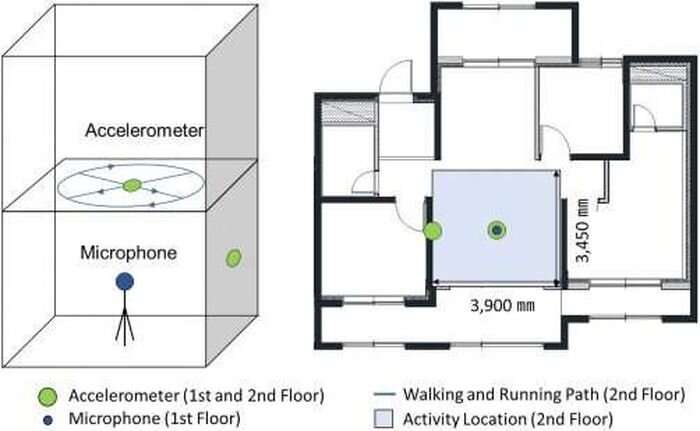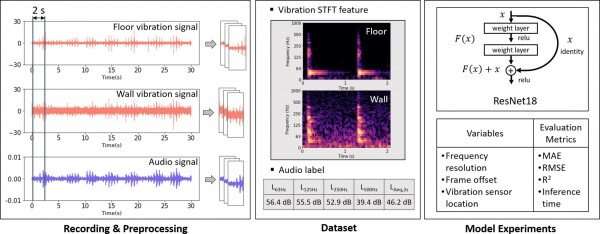New AI technology to measure the noisiness of upstairs neighbors

Some people can't sleep well because of the noise from above: Noisy upstairs neighbors. In South Korea, these sleepless nights happen in many places because of the noise from upstairs neighbors. Living in the apartment units means dealing with a level of noise from the neighborhood on a daily basis.
The Korea Institute of Civil Engineering and Building Technology has announced a new approach for predicting the footstep sounds of upstairs residents using a convolutional neural network (CNN) model based on vibration signals. The CNN models are widely applied in computer vision tasks. The vibration sensors are designed to be installed on the wall and floor slab of a residential building to monitor footstep-induced vibration in real–time.
Upstairs floor noise causes stress to occupants and leads to conflicts between neighbors. According to a survey conducted by Korea Environment Corporation in 2022, the most common noise complaints sources in apartment units are footsteps, accounting for 67.2%. Furthermore, hammering rated 10.6%, and furniture dragging sound showed 5.5%.
The biggest sources of neighbor noise in apartment units, which are mostly box-frame reinforced-concrete structures, are heavy-weight impact sound. However, there isn't any method to obtain objective sound information.
Numerical methods, such as statistical energy analysis and finite element analysis can be considered for predicting heavy-weight impact sounds. However, it is difficult to predict the sound when the material properties of the structure are complex or the constraint conditions are diversified. Furthermore, physics-based models require several hours for computation.

The presented algorithm is a method for predicting the actual impact sound, especially footsteps in the rooms of buildings. A dataset was experimentally collected and its performance was compared according to the location of the vibration sensors and the resolution of the short-time Fourier transform (STFT) feature, which represents footstep-induced vibrations. The sound level for 2 s was predicted with 0.99 dB as the mean absolute error.
When complaints about inter-floor noise are raised, there is insufficient evidence of sound level or which house occupants made the sound. Therefore, third parties who mediate disputes about the inter-floor noise disturbances between the neighbors, have to make decisions based on the subjective opinions of the person who filed the complaint and the neighbors who were suspected of making the sounds.
However, in the future, an 'impact monitoring system' that predicts sound based on vibration could be beneficial to alter the behavior of the neighbors causing the excessive sound. Or, it is possible that the stored data can be used by mediators in case of disputes to identify the sound source household and assess the disturbance.
Main researcher Shin noted that it is more important to accumulate occupants' perceived quality of inter-floor noise and indoor sound environments under actual living conditions. It can be used as basic data for identifying the sound perceived as 'noisy' by the neighbors. Shin said that, "To reduce problems caused by noise between floors, it is important to quantify the noise exposure to occupants. This AI-based technology will make effective monitoring of the inter-floor noise so people will less suffer from neighbors' noise in the future."
The work is published in the journal Applied Acoustics.
More information: Hye-kyung Shin et al, Sound prediction based on footstep-induced vibrations in concrete building using a convolutional neural network, Applied Acoustics (2022). DOI: 10.1016/j.apacoust.2022.108965
















